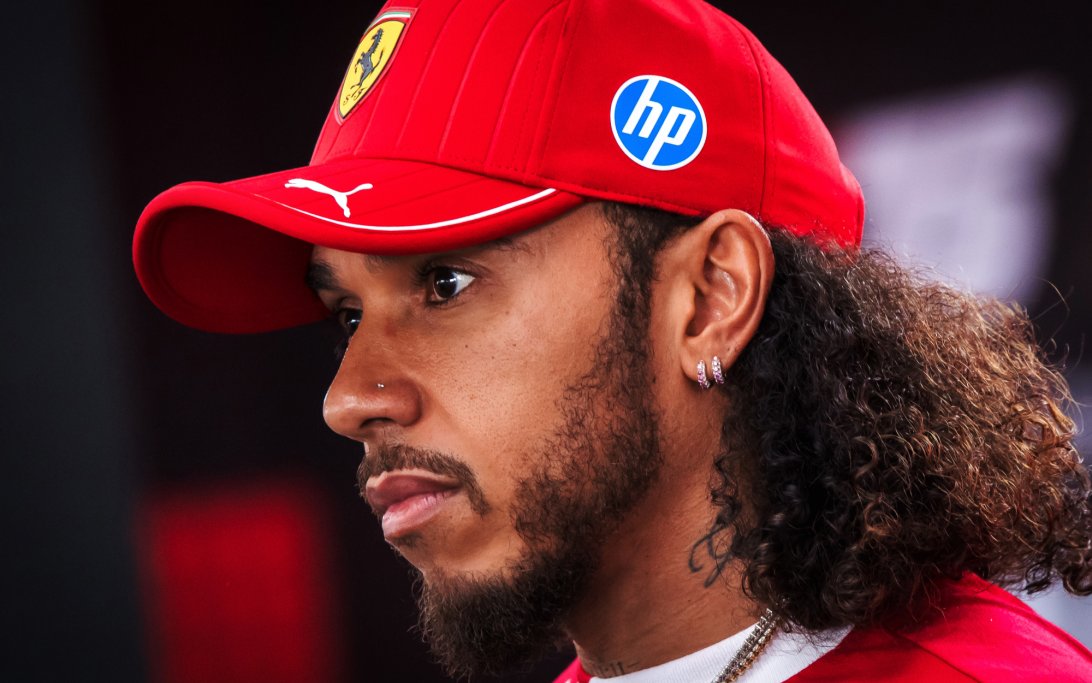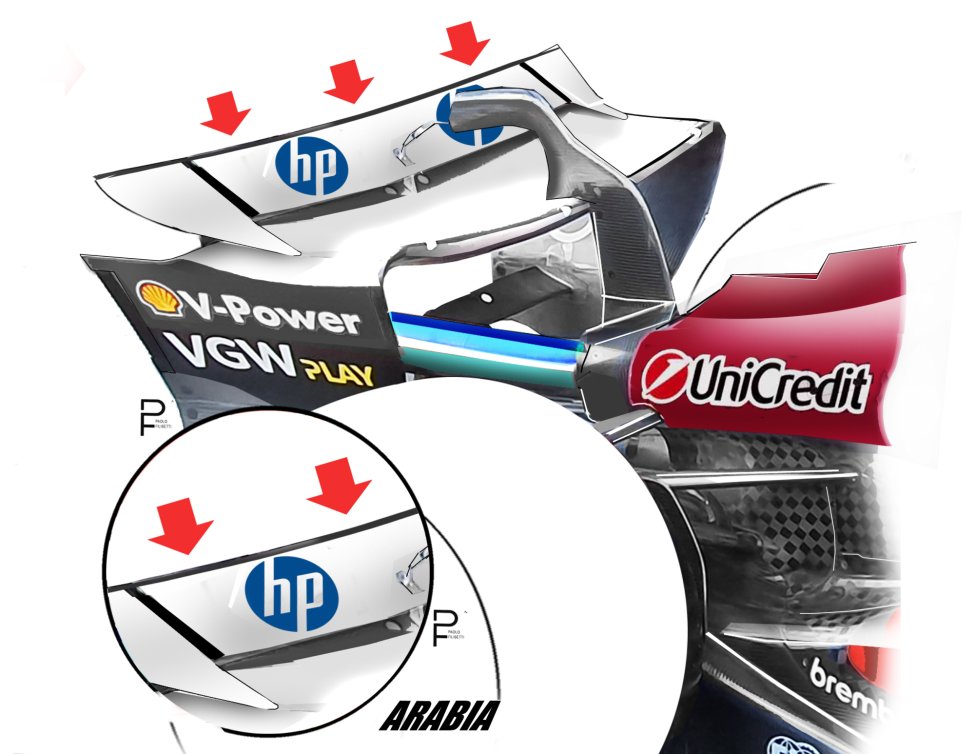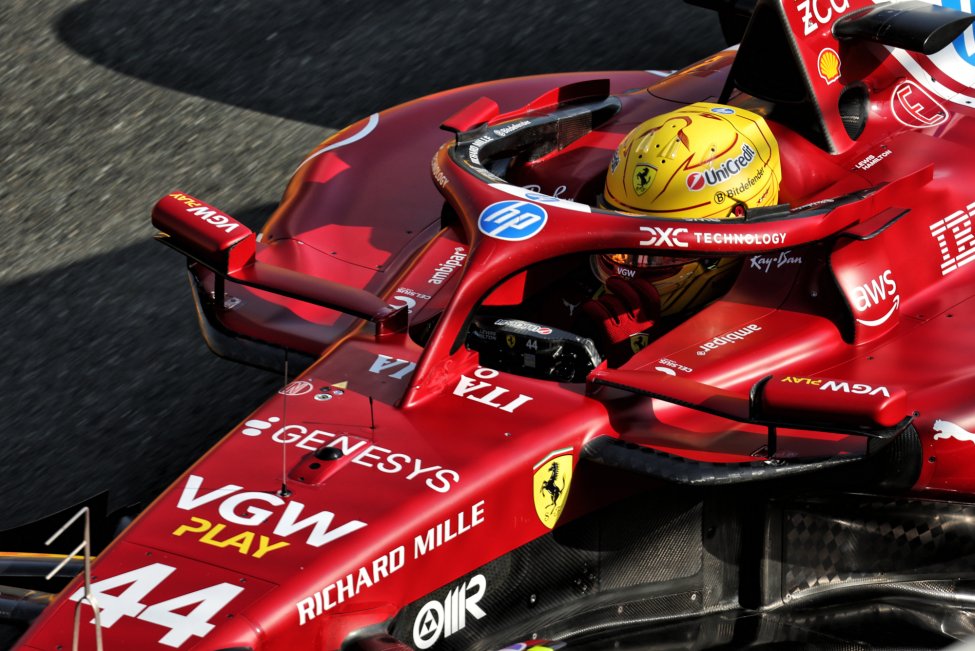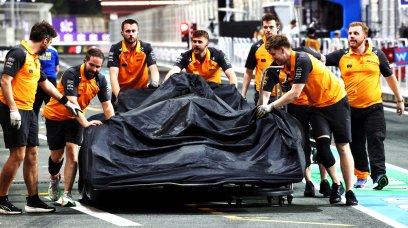Ferrari's new rear-wing specification for Saudi Arabia features modifications to the main profile, the flap and a new beam wing design to that which was deployed last weekend in Bahrain.
In essence, the upgrades are purely track-specific upgrades to adapt to the characteristics of the Jeddah track, which requires minimal downforce and maximum aerodynamic efficiency - or the least amount of drag possible.
Nevertheless, it is worth highlighting how these upgrades have a direct relationship with the adoption of minimum ride heights to increase load and thus downforce that is created.
The load which is produced by the low-pressure area generated under the car is "zero cost", in that it does not produce huge amounts of drag, therefore in Jeddah, as low a ride-height as possible constitutes the logical choice to maximise performance, which in turn is helped by the smooth track surface.
This allows the ride height to the taken to the extreme, which follows the design direction Ferrari developed with its SF-25 machine, but which in previous races has proven to be too extreme, thus creating a narrow performance window for Lewis Hamilton and Charles Leclerc. Hamilton was able to access the performance locked within by claiming the Sprint pole and win in China, where the car found its most favourable conditions.
For Jeddah, Ferrari started its simulations from the same baseline as the 2024 car, with which Leclerc finished third, taking the same ride height and rear-wing settings, including the minimal possible configurations for the chord and beam wings, and combining these to still allow for the best possible air extraction from the diffuser.
Article continues below.
Lewis Hamilton's struggles
Nevertheless, it is important to note how Hamilton struggled on Friday, on a track, which on paper, would not have the characteristics to place the car in what could be described as a 'crisis' mode.
He placed 13th in FP2, 1.104s behind pace-setter Lando Norris in the McLaren, but more significantly, some seven-tenths behind fourth-placed Leclerc.
After the Bahrain GP, Hamilton declared that he was struggling with adapting to the engine braking of the Ferrari, something he had not used in 12 seasons at Mercedes, with RacingNews365's sources indicating that the Ferrari system is much more invasive than the Mercedes.
The Ferrari systems are forcing Hamilton to brake in an unnatural way to his 'brake hard and late' approach he has carried throughout his career, and which was finely tuned after using Mercedes engines and power units for his entire career until joining the Scuderia.
It is a significant problem for Hamilton as it is not possible for the team to find a solution to the problem in either vehicle dynamics or aerodynamics. Even changes to the power unit software would only bring a marginal improvement.
Ferrari could make sweeping changes to the software to aid Hamilton's adjustments, but the onus is on the seven-time champion to adjust and adapt his driving style to meet the demands of the Ferrari power unit - and make it as similar as he can to Leclerc to exploit the full potential of the Ferrari package.
Also interesting:
WATCH: Bad day for Hamilton as Tsunoda suffers first Red Bull crash
Be sure to join RacingNews365's Ian Parkes and Nick Golding, as they dissect a challenging opening day in Jeddah.
Most read
In this article























Join the conversation!